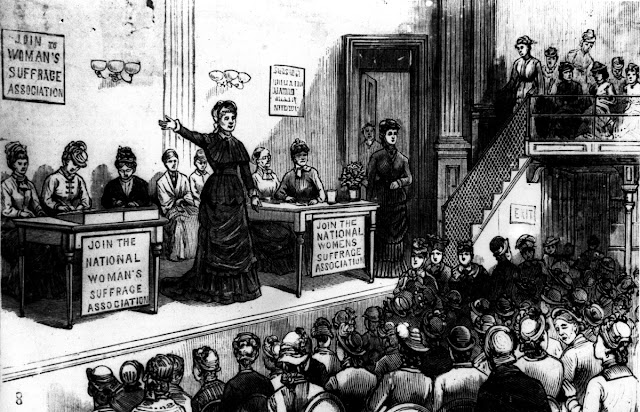In historical writing and analysis, PRESENTISM introduces present-day ideas and perspectives into depictions or interpretations of the past. Presentism is a form of cultural bias that creates a distorted understanding of the subject matter. Reading modern notions of morality into the past is committing the error of presentism. Historical accounts are written by people and can be slanted, so I try my hardest to present fact-based and well-researched articles.
Facts don't require one's approval or acceptance.
I present [PG-13] articles without regard to race, color, political party, or religious beliefs, including Atheism, national origin, citizenship status, gender, LGBTQ+ status, disability, military status, or educational level. What I present are facts — NOT Alternative Facts — about the subject. You won't find articles or readers' comments that spread rumors, lies, hateful statements, and people instigating arguments or fights.
FOR HISTORICAL CLARITY
Illinois celebrated the first state holiday for the former President's birthday, "Barack Obama Day," on August 4, 2018.
When I write about the INDIGENOUS PEOPLE, I follow this historical terminology:
- The use of old commonly used terms, disrespectful today, i.e., REDMAN or REDMEN, SAVAGES, and HALF-BREED are explained in this article.
Writing about AFRICAN-AMERICAN history, I follow these race terms:
- "NEGRO" was the term used until the mid-1960s.
- "BLACK" started being used in the mid-1960s.
- "AFRICAN-AMERICAN" [Afro-American] began usage in the late 1980s.
— PLEASE PRACTICE HISTORICISM —
THE INTERPRETATION OF THE PAST IN ITS OWN CONTEXT.
 |
| Barack Hussein Obama was photographed for Rolling Stone magazine in 2012, just before beginning his second term as President of the United States. |
The day is "set apart to honor the 44th President of the United States of America who began his career serving the People of Illinois in both the Illinois State Senate and the United States Senate. He dedicated his life to protecting the rights of Americans and building bridges across communities."
Illinois Senate Bill 55 was passed by Illinois Governor Bruce Rauner, Republican, on August 4, 2017.
"It's incredibly proud of Illinois that the President came from Illinois. I think it's awesome, and we should celebrate it," Rauner said, "I don't think it should be a formal holiday with paid, forced time off, but I think it should be a day of acknowledgment and celebration." Barack Obama Day is a commemorative holiday but not a paid holiday, so government employees continue to work.
President Barack Obama (born August 4, 1961, in Honolulu, Hawaii, USA - not Kenya, Africa) is one of three presidents from Illinois, the other two being Abraham Lincoln (born near Hodgenville, Kentucky) and Ronald Reagan (born in Tampico, Illinois).
"It's incredibly proud of Illinois that the President came from Illinois. I think it's awesome, and we should celebrate it," Rauner said, "I don't think it should be a formal holiday with paid, forced time off, but I think it should be a day of acknowledgment and celebration." Barack Obama Day is a commemorative holiday but not a paid holiday, so government employees continue to work.
 |
| Barack Hussein Obama's baby picture, Circa 1961. |
NOTE: Perry County, Alabama, declared the second Monday of November to be Barack Obama Day.Compiled by Dr. Neil Gale, Ph.D.



 \
\











